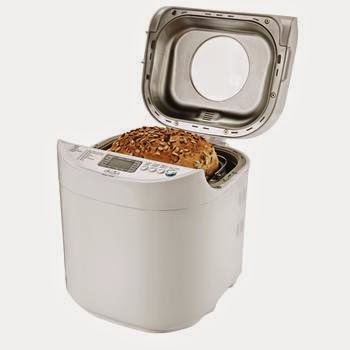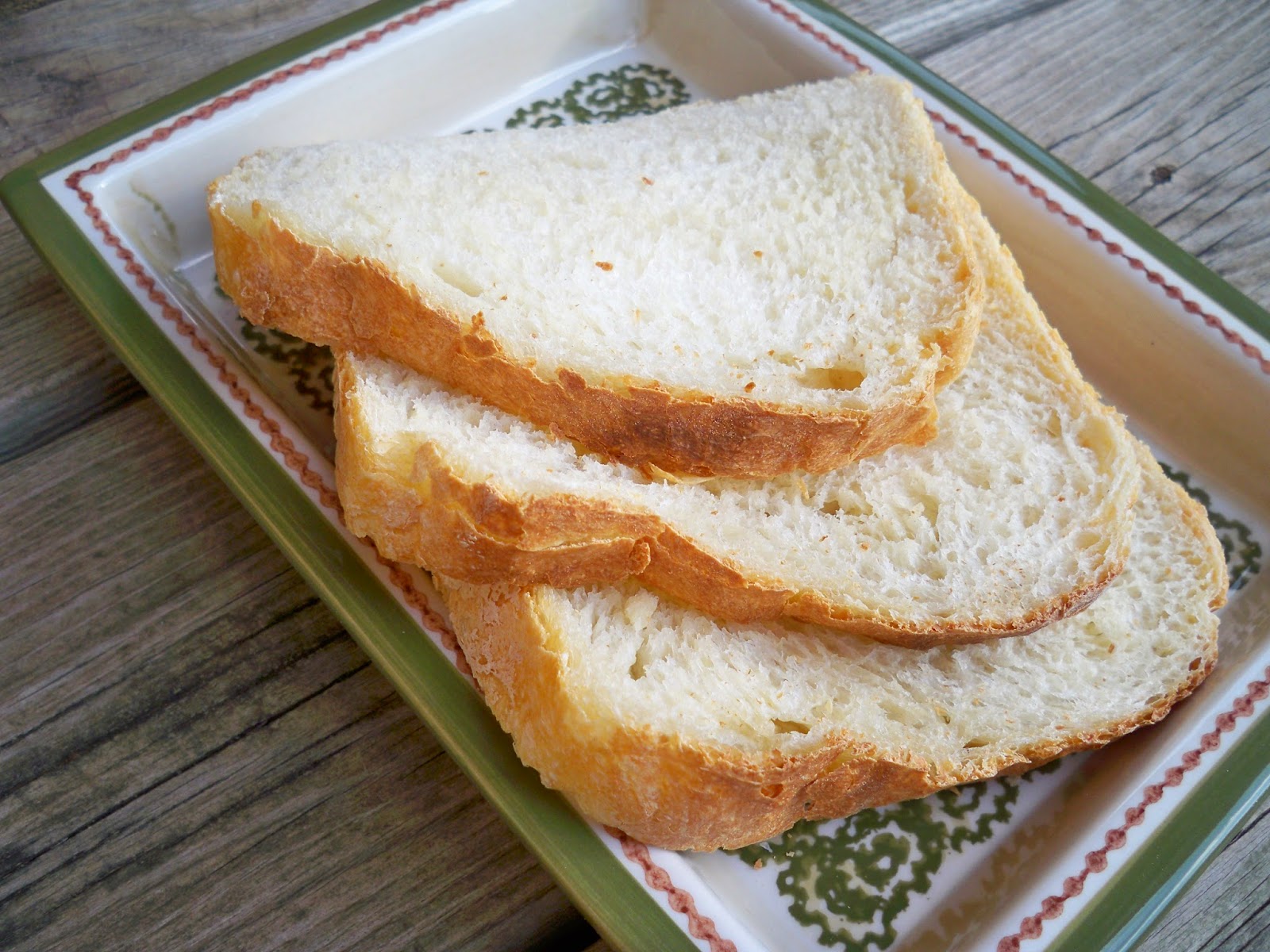Bread Machine Basics 101
A friend talked me into getting a bread machine, and it is one of the best kitchen appliances I've ever bought. I use it so often, that besides the coffee pot, it is the only appliance left out on my kitchen counter! If you have thought about getting one or have one but haven't had much success, I encourage you to do two things. First, read this guide for lots of hints and tips for successful baking, and second, for your very first loaf that is guaranteed to be a success, make my Best Bread Machine Bread. Unlike some recipes, you don't have to add extra flour or water to get the dough "just right", and the dough will form perfectly allowing you to see what a perfect dough ball looks like.
Baking Bread
Tools: You will need a liquid measuring cup, dry measuring cups, measuring spoons, a silicone spatula, and a thermometer. An electric knife to slice the loaf is also extremely helpful. I prefer to use a digital meat thermometer, and here is a link to the one I use as well as a link to my bread machine...the Oster Expressbake Breadmaker.
 |
| http://www.walmart.com/ip/Oster-Expressbake-Breadmaker/12399570 |
 |
| http://www.amazon.com/Polder-Safe-Serve-Instant-Kitchen-Thermometer/dp/B00881O8JM/ref=sr_1_3?ie=UTF8&qid=1411344476&sr=8-3&keywords=polder+meat+thermometer |
Ingredients
You will need a variety of ingredients, but the basics are bread flour (be sure to buy bread flour), water, milk, eggs, butter or vegetable oil, salt, sugar, active dry yeast, and bread machine yeast.
It's a good idea to start with all new, fresh ingredients (especially fresh flour and yeast). Old flour can lack moisture, and older yeast can be on its way to becoming inactive. Here is a great page that tells how to test if your yeast is fresh: http://www.redstaryeast.com/lessons-yeast-baking/yeast-shelf-life-storage/yeast-freshness-test
Also, make sure ALL ingredients are at room temperature (between 77-85 degrees F) unless otherwise noted in the recipe. Milk can be heated briefly in the microwave until the proper temperature is achieved, and whole eggs can be put in a cup of hot water for 5 minutes to safely bring them to room temperature. If flour is stored in the refrigerator or freezer, measure out the necessary amount, and let it come to room temperature. Cream cheese and butter should be softened. Pumpkin, yams, squash, applesauce, pears, and mashed banana should be at room temperature before using. Yeast should be stored in the refrigerator or freezer and can be added directly to the recipe without bringing it to room temperature.
If using buttermilk powder, it should be added after the flour. Adding it directly to the water will cause lumps.
Use large-sized eggs.
Baking with grains: Purchase grains in small quantities and refrigerate to prevent fat from turning rancid. If stored longer than one month, taste before using. Cracked wheat, bulgur, and other grains absorb water and can impact the texture of a loaf, so to prevent grains from touching the water, level the flour into the corners of the baking pan, then measure grains on top.
Measuring Ingredients: Exact measurements are key to successful bread baking. With wet ingredients, use ONLY measuring cups with cups/ounces marked clearly on the side. After filling the measuring cup, place it on a flat surface and view it at eye level to make sure the amount of liquid is exact.
With dry ingredients, always "level off" the measurement with the back of a knife to make sure the measurement is exact. Never use the measuring cup to scoop the ingredients (like flour). Fill the measuring cup with a spoon, then tap the side of the cup with a knife to remove air pockets. Level off the measuring cup with a knife.
Order of adding ingredients: Putting ingredients into the bread maker in the EXACT order given in the recipe is very important. Follow your bread machine's instructions, but generally, this means:
FIRST, liquid ingredients
SECOND, dry ingredients
LAST, yeast
Before adding yeast, use your finger to form a well (hole) in the flour where you will pour the yeast. In a bread machine, yeast must not come into contact with a liquid when you are adding ingredients. Yeast should also not come in contact with salt before mixing, as salt will kill it. Cinnamon and garlic also inhibit rising and should be kept away from the yeast.
Checking Dough Consistency
Many bread recipe books recommend helping the beginning 5-minute mix (knead) by scraping down the sides with a silicone spatula. All you have to do is leave the lid up and as the blade is turning, scrape down the sides and help the ingredients mix.
Because the kneading action of different bread machines varies, it's important to check the consistency of bread dough after the first 3 to 5 minutes of kneading.
If the dough looks dry and crumbly (see photo below) or forms two or more balls, add additional liquid, 1 teaspoon at a time, until one smooth ball forms.
If the dough has too much moisture and does not form into a ball (see photo below), add additional bread flour, 1 tablespoon at a time, until a ball forms.
Bread dough with the correct amount of flour and liquid will form a smooth ball and circle the pan nicely (see photo below). Dough with nuts or fruit in it needs to be a bit stickier than regular bread dough in order to help the nuts or fruit stay incorporated in the bread.
If making a bread with fruit in it, this recipe has a helpful tutorial: http://easyaspiecanbe.blogspot.com/2014/01/cranberry-orange-bread-recipe-and.html
Raising Dough for Oven-Baking
When using the dough cycle, you often need to let the shaped dough rise before baking. For best results, a warm, draft-free area where the temperature is between 80-85 degrees is ideal. I use my unheated oven. Place the oven's lower rack in the lowest position and set a large pan of hot water on the rack. Cover the shaped dough loosely with a dampened feed sack towel, and place it on the top rack of the oven. (You can find these towels at Wal-Mart: http://www.walmart.com/ip/Aunt-Martha-s-Dish-Towel-White/24660651) Close the door and let the dough rise until nearly doubled, using the time suggested in the recipe as a guide. Remove the dough and the water and preheat the oven.
Storing Bread
Remove hot bread from the machine as soon as it is done, and remove the bread from the pan following the manufacturer's directions. Allow bread to cool for 15 minutes before slicing. Once bread is completely cooled, wrap in plastic wrap or place it in a plastic bag. Store it in a cool, dry place for up to three days.
Sources
Better Homes and Gardens Best Bread Machine Recipes. Des Moines, Iowa: Meredith Corporation, 1997.
Oster 2lb Expressbake Breadmaker. Boca Raton, Florida: Sunbeam Products, Inc. doing business as Jarden Consumer Solutions, 2009.
Washburn, Donna and Heather Butt. 300 Best Bread Machine Recipes. Toronto, Ontario: Robert Rose, Inc., 2010





















